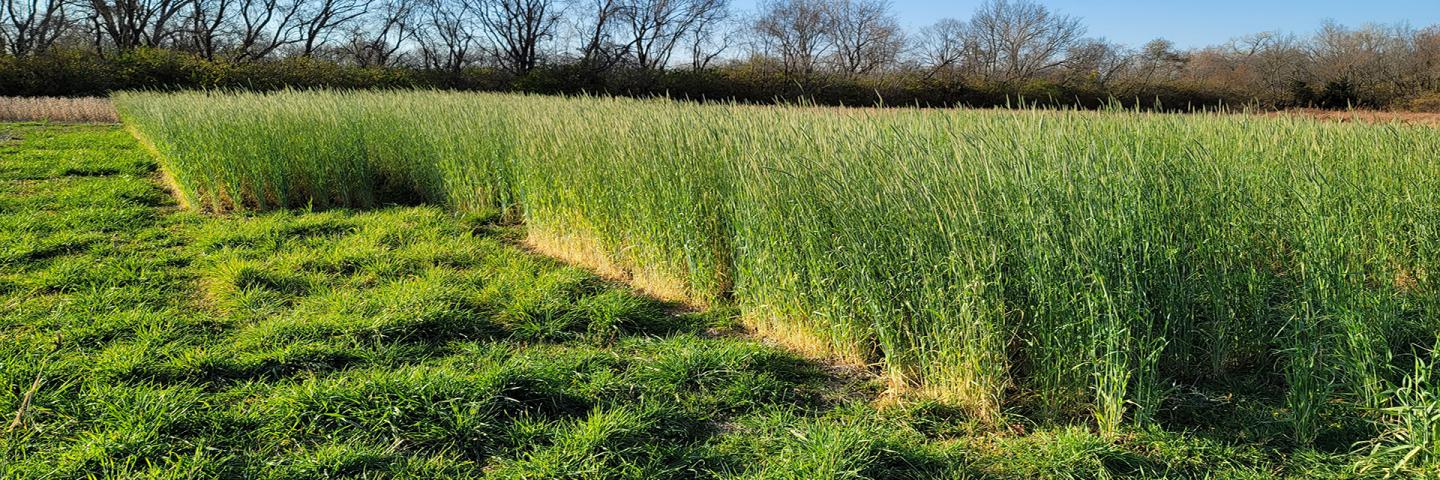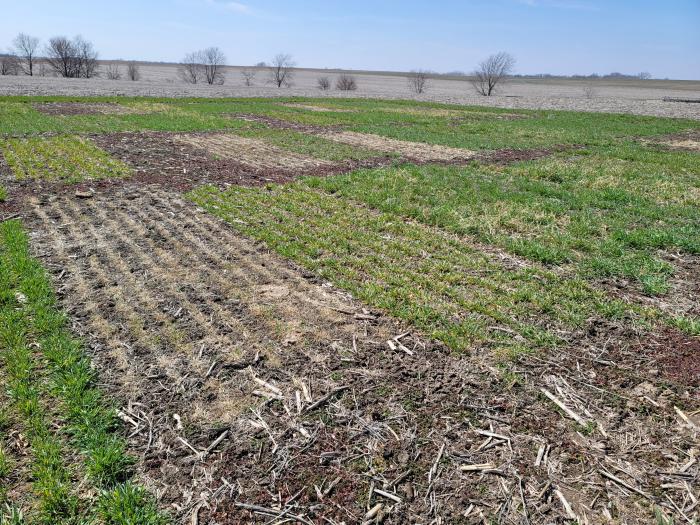Maximizing Cover Crop Benefits with Cereal Rye Variety Mixes

Cereal rye continues to be a crucial cover crop for scavenging nitrogen, reducing soil erosion, adding biomass to the system, and suppressing weeds. The Manhattan Plant Materials Center is exploring new, innovative ways to use cereal rye to maximize conservation benefits.

Cereal rye continues to be an important cover crop in the Midwest. It fulfils many roles in soil health management systems such as scavenging nitrogen, reducing soil erosion, adding biomass to the system, and suppressing weeds, especially winter annuals. Cereal rye is also widely available and well adapted to a range of soil and climatic environments. In 2016 and 2017, the Manhattan, Kansas Plant Materials Center participated the Plant Materials Program National Cool Season Cover Crop Adaptation Trial, which featured cereal rye as one of the selected cover crop species. Height at maturity, blooming dates, emergence, and winter survival were the focus of the study. Much was learned from the trial about several cereal rye varieties evaluated for cool season cover cropping. As an extension of the cover crop adaptability trial, an advanced cover crop study was designed to further investigate growth traits of cereal rye varieties adapted to the Central Plains.
When choosing cover crop varieties, producers may take advantage of differences among varieties to best meet the goals of their production system. In Kansas, fall growth differed among cereal rye varieties. Cereal rye ‘FL 401’ consistently grew taller and was also one of two varieties to produce a non-viable seed head the same fall that it was planted. Other varieties such as ‘Elbon’ remained in a vegetative growth pattern and did not produce a seed head in the fall. In the spring, FL 401 exhibited high winter mortality while Elbon thrived and reached anthesis by the middle of May. Could producers maximize fall and spring growth if the two varieties were planted as a mix?
A successful cereal rye mix would allow for increased nitrogen scavenging, high C:N residue for soil armor, as well as a taller residue that may help with snow catch and moisture retention in dry years for a longer period of time than a single variety alone. A mixed variety strategy may also be beneficial to livestock producers who plant and manage cereal rye as an annual forage crop. Manhattan Plant Materials Center staff established a multi-year study in different environmental conditions to evaluate the performance and productivity of cereal rye blends along with other common cover crops such as spring and winter oats, winter wheat, and triticale, to determine their usefulness for maximizing cover crop benefits. Contact Manhattan PMC staff for more information or stay tuned for the next report.
For additional information on specific species of plants mentioned, please see the USDA PLANTS database. Technical information and guidance on the use of conservation plants to address resource concerns is available on the Plant Materials Program website or contact the nearest Plant Materials Center or plant materials specialist.

